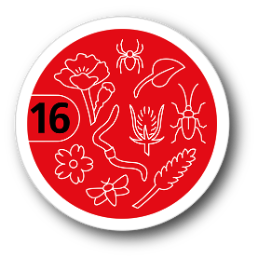This SRF pursues three objectives:
- Monitoring the biodiversity of agricultural landscapes and evaluating the measures aimed at preserving it at the plot, farm and landscape scale.
- Developing strategies for promoting beneficial organisms (e.g. pollinators, antagonists, decomposers), species-rich stands, and farming systems that provide ecosystem services.
- Improving the efficiency of ecological compensation and of management methods at plot and farm level in order to achieve agricultural environmental targets and support the Swiss federal government’s biodiversity strategy whilst bearing in mind climate change.
From the above, the following research topics are derived:
Monitoring biodiversity
- How can a cost-effective and efficient monitoring programme be designed so as to yield a high added value for public authorities and the agricultural sector (decision-making bases)? What new measuring techniques (remote sensing, automated surveys, laboratory methods such as meta-genomics) can be used to improve ALL-EMA’s cost-benefit ratio?
- What indicators can be derived from the data currently collected? How can synergies be created between ALL-EMA, BDM (=biodiversity monitoring), land-use statistics, the monitoring of nesting birds in Switzerland, and the AGIS Database?
- What biodiversity indicators (additional faunistic groups) can be used to supplement existing agro-environmental monitoring?
- How can biodiversity be better represented as an impact category in life-cycle assessments?
Promotion of useful organisms and ecosystem services
- How should flower strips in arable farmland be designed so as to promote pollinators and predators in a targeted manner? Do flower strips and other BPAs have an effect on crop yields?
- Is pollination of the crop plants dependent upon pollinating insects guaranteed?
- What are the requirements of pollinators and beneficials in terms of the spatial configuration of the agricultural landscape that allow them to provide their ecosystem services in agricultural crops?
- What ecosystem services are provided by BPAs and marginal-yield sites?
- How can new crops and cultivation systems (e.g. grain legumes, agroforestry systems, crops of wet-dry locations) be used to reinforce ecosystem services?
- What are the opportunities and risks for ecosystem services, and for biodiversity in particular, offered by new technologies (e.g. biotechnology, genome editing, RNAi, gene drive) or the use of macroorganisms in plant protection?
Improving ecological compensation
- How can ecological compensation be developed further so as to preserve and promote a higher percentage of environmental target and indicator species?
- How important are harmful plants (e.g. invasive neophytes, poisonous plants) in agricultural landscapes and biodiversity priority areas?
- How can the biodiversity of grassland in the mountain region be preserved, and what are the consequences of new management methods (irrigation, silage preparation, leaf blowers, etc.) and climate change?
- How must BPAs, arable land and grassland populations of different intensity levels be spatially configured in order to optimally promote species- and habitat diversity?
- How can the fodder preferences and physical-activity needs of different grazing animals be combined in order to preserve species- and habitat diversity whilst keeping agricultural production profitable?






